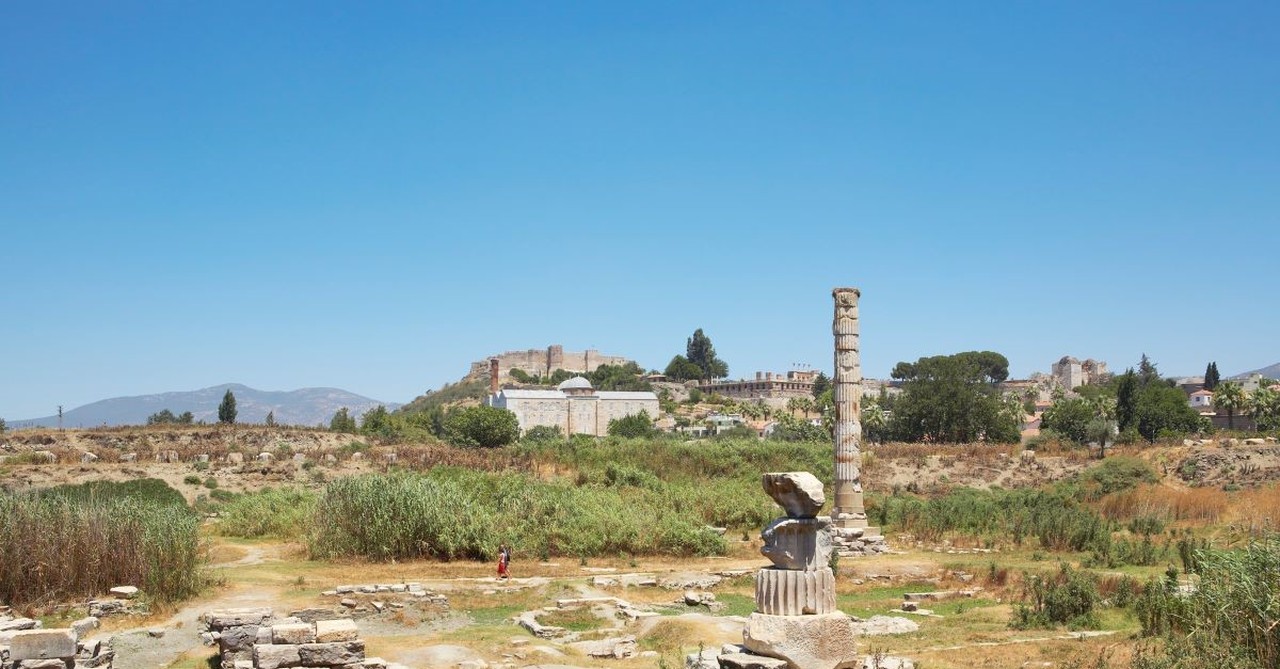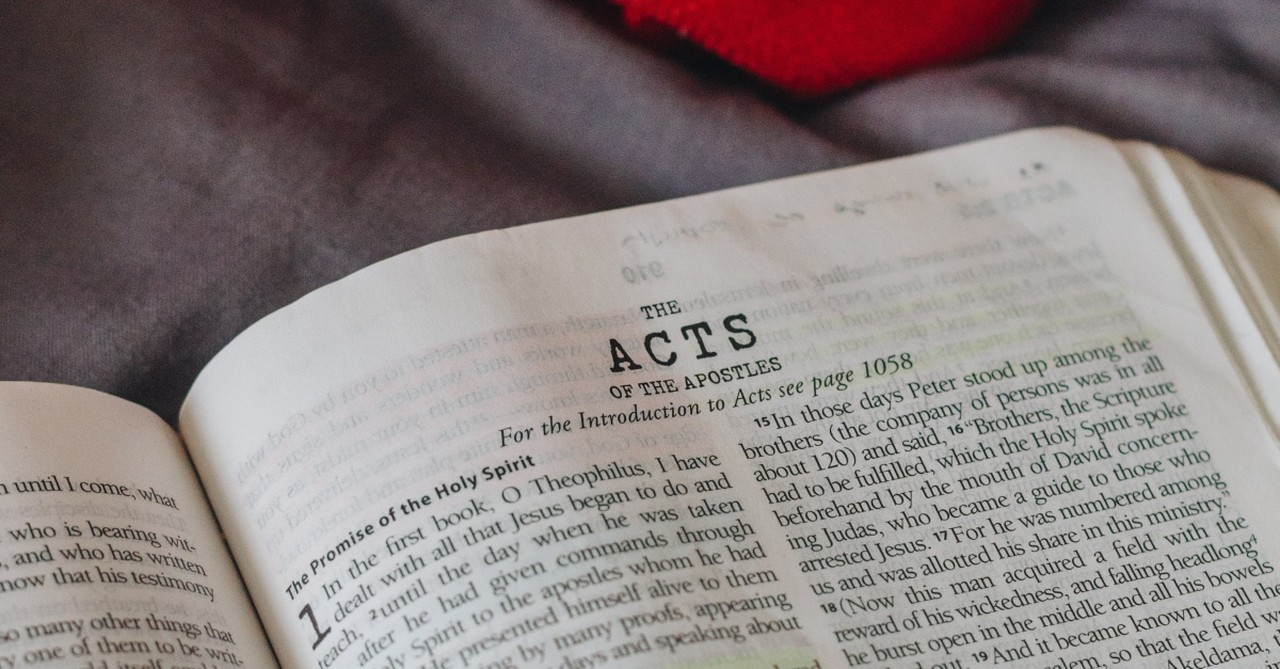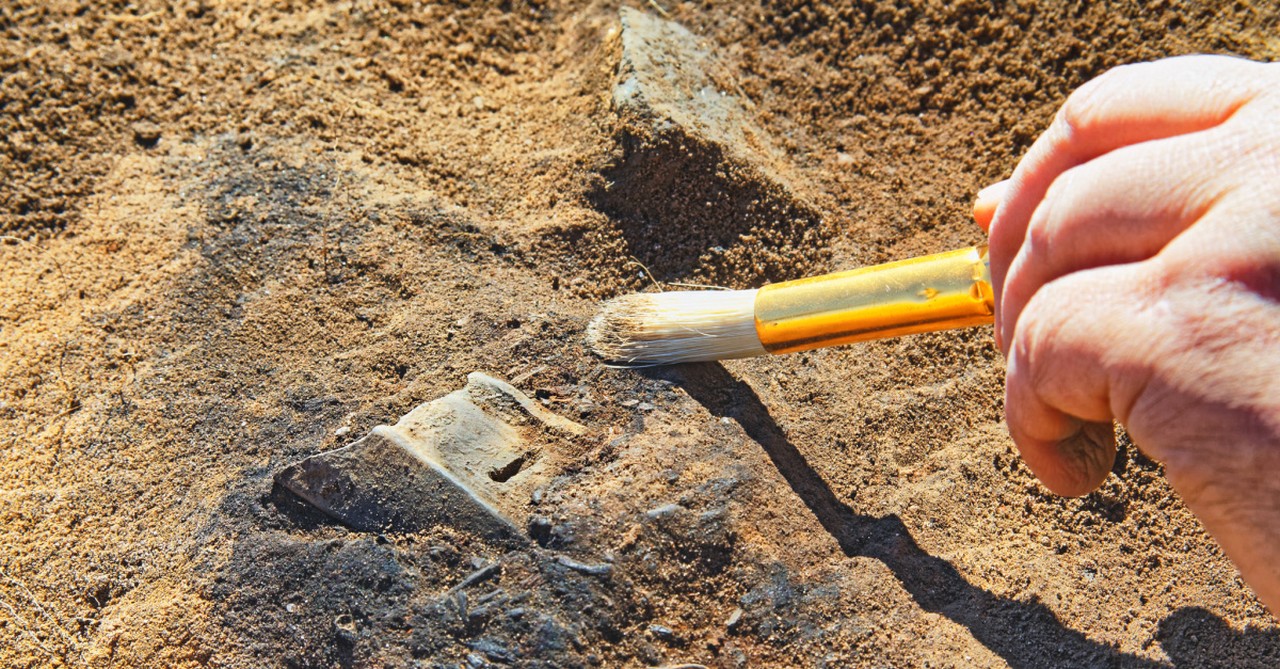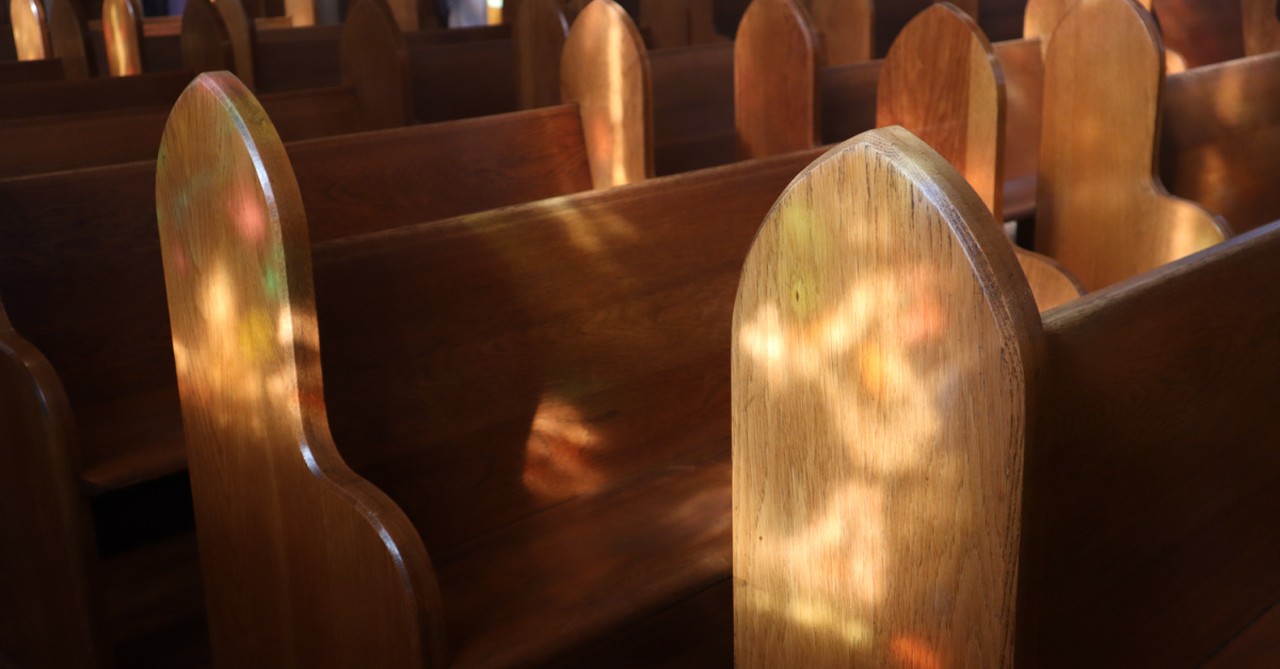Unveiling Ephesus: 7 Fascinating Insights into the Ancient Biblical City

Ephesus is a prominent city within the New Testament. But if you want to travel to Ephesus today, you will have some difficulty. Today, there is no city of Ephesus, nor is there a church of Ephesus. The city of Ephesus is now buried—or at least partially buried thanks to excavation—under the modern-day city of Selcuk in Turkey. It is now 99% Muslim and one of the most unreached places in the world. There is, according to some missionaries, a small church of former Muslims gathering somewhere near the city.
For many years, the city was buried. But in the late 19th century, archaeologists began digging for the ancient Temple of Artemis. Excavation has been vast since that time, and much of the ancient city has been uncovered. What does it tell us about the world of the Bible?
Here are seven things for us to know about Ephesus.
Photo Credit: ©GettyImages/SvetlanaK
Where Is Ephesus in the Bible?

Where Is Ephesus in the Bible?
SLIDE 1 OF 5
Ephesus does not appear in the Old Testament but is prominently featured in the New Testament, particularly in Acts and Paul’s letters. In Acts, Ephesus is described as a prominent hub for early Christianity. Paul spent considerable time in the city during his missionary journeys, preaching the gospel and establishing a strong Christian community there (Acts 18:19-21; 19:1-41). Because of the riot Paul had to leave Ephesus—and as a result, we have his tearful goodbye in Acts 20. We also see in Acts the significance of the Temple of Artemis. It was because Demetrius, a silversmith selling idols, saw his income threatened that he instigated a riot.
The Letter to the Ephesians, which is traditionally attributed to Paul, also gives us information about their history. Though likely a cyclical letter, we can still see a personal touch for Ephesus. Its emphasis on themes of unity among believers, personal holiness, and the organization of the church tells us that they struggled with some of the same issues we do today. That this cyclical letter was to begin in Ephesus likely highlights its prominent role within early Christianity.
Ephesus appears again in the Book of Revelation. It is one of the seven churches which Jesus addressed. Revelation 2:1-7 contains the letter to the church in Ephesus. It both commends them for their hard work and perseverance in a difficult cultural situation but also admonishes them for having forsaken their first love. It encourages them but also calls them to repentance and renewal. Christ tells them that if they do not repent, He will come and “remove their lampstand.” Did that happen?
Photo Credit: Unsplash/Sincerely Media
What Happened to the Church at Ephesus?

What Happened to the Church at Ephesus?
SLIDE 2 OF 5
We know that the church at Ephesus remained prominent for the first few decades of the early church. In 431 AD the Council of Ephesus affirmed Mary as Theotokos (Mother of God) and condemned the teachings of Nestorius. It continued to be a significant city during the Byzantine period but it began to decline as a city. By the 14th century Ephesus had been largely abandoned. Most went to nearby areas like Selcuk. After the Turkish invasions the city, and thus the church, were no more.
The decline of the church's influence seems to have paralleled the gradual decline of the city. Some of the downturns of the city came from natural causes or natural disasters. Perhaps the biggest issue was the silting of the harbor. Have you ever tried canoeing when the water isn’t deep enough? Imagine a similar scenario if you were commanding a massive trading vessel. As sediment began to pile up along the harbor it became increasingly difficult for traveling merchants to dock there. This harmed the economy of Ephesus. This left them without the economic backbone to endure devastating earthquakes in the 3rd and 7th centuries. If you add Gothic raids in the 3rd century and another wave of Arab raids in the 7th and 8th centuries, Ephesus didn’t stand a chance.
One might also argue that Christianity itself both helped and harmed the city of Ephesus. The concerns of Demetrius were not unfounded. As Christianity spread throughout the region the Temple of Artemis lost significance. The church held significant influence, but could it rival the economic impact of one of the Seven Wonder of the Ancient World?
I am not arguing that it was a bad thing for a pagan temple to be destroyed, but rather that this would have caused an impact upon the city itself. As the city itself declined so did the significance of that particular church at Ephesus.
Is it possible to unearth some of the former grandeur of the city? That is what archaeologists have attempted to do since the 19th century. What have they found?
Photo Credit: @kellysikkema
Archaeological Finds Related to Acts and Revelation

Archaeological Finds Related to Acts and Revelation
SLIDE 3 OF 5
If a traveler walked through Selcuk in the 18th century you’d forgive him if he questioned whether or not a bustling ancient city existed underfoot. There were still a few physical remnants but the ancient splendor was gone.
The Temple of Artemis
This all changed in 1863 when John Turtle Wood, sponsored by the British Museum, began an extensive excavation of the site of the Temple of Artemis. It took him six years but in 1869 he discovered the foundations of the temple. Wood’s work was then carried on by another British archaeologist, David George Hogarth. Hogarth was able to identify several construction phases of the temple.
These excavations revealed how massive a structure the temple was. Detailed carvings and inscriptions gave further insight into its cultural significance and its role as the center of the worship of Artemis. One can see why Demetrius had such a fear in Acts that if the gospel took root and the temple was destroyed the city might be brought to its knees. One can also see why the church in Ephesus, mentioned in Revelation 2, had such opposition and difficulty.
Harbor Street
Another important find was Harbor Street, or the Arcadian Way. It was most likely one of the main streets in ancient Ephesus leading from the city’s harbor to the Great Theater. This street was a crucial part of the infrastructure. It shows that the city was indeed a major commercial and cultural hub in the ancient world, just as we see in the Scriptures.
John Turtle Wood began this work, unearthing a bit of a map of how the buildings were connected. But the Austrian Archaeological Institute in the late 19th century unearthed several features such as colonnades, shops, and public buildings lining Harbor Street. This aligns with the New Testament descriptions of Ephesus as a thriving commercial harbor city.
Great Theater
Another significant find was The Great Theater of Ephesus. It was capable of seating some 25,000 spectators. Again Wood and the Austrian Team later began much of this excavation. More recently a husband-and-wife duo, the Knoblauch’s, have focused upon it’s prominent role in the city’s public life.
This Great Theater was mentioned in Acts 19:29-41 as the place where the great riot against Paul broke out. This would have been where Paul went to explain the gospel to others. Can you imagine the audience he would have had? This might have been compared to a Billy Graham crusade in our day. If many were convinced of the gospel, one can understand the impact this might have had.
These are some of the finds related to the biblical times. There have been a couple of other structures, from the time of the early church and Byzantine church, unearthed as well.
Photo Credit: ©Getty Images/Krugloff
The Basilica of St. John

The Basilica of St. John
SLIDE 4 OF 5
The Basilica of St. John is believed to be the burial site of John the Apostle. History has him dying in Ephesus. It was constructed in the 6th century AD by the Byzantine Emperor Justinian I. It was designed in the form of a cross and featured a domed roof, supported by impressive columns and adorned with mosaics and frescoes.
The ruins have been extensively excavated since the early 20th century. Archaeologists have uncovered intricate floor mosaics, remnants of the original columns, and the baptistery. According to tradition, John spent his last years in Ephesus and was buried on Ayasuluk Hill, where the basilica was later constructed. This connection made the site a major pilgrimage destination.
The Church of Mary
It was here that the Council of Ephesus in 431, the Third Ecumenical Council, held its meetings. At this council, the church affirmed that Mary is “the Mother of God” in opposition to Nestorius. This is likely where the church gets its name, though some believe that Mary did, in fact, accompany John along to Asia Minor, where she too died in a small house outside of Ephesus. (Though the majority view is that she died in Jerusalem before John went to Asia Minor).
The church was first identified and excavated by Austrian archaeologists in the early 20th century. The excavations uncovered various significant elements, such as the apse, baptistery, and numerous inscriptions and mosaics. The site also revealed the remains of a bishop's palace and other related structures.
Continued Historical Significance
The remains of Ephesus held much significance not only for the church but also for secular history. In fact, it was in an effort to unearth the Artemis temple that archaeology began here. But as it began we saw not only the impact of Artemis but also the impact of Christ upon this ancient city. We see that the city was pivotal in early Christianity and was the site of a major theological decision in 431.
Today, the city itself does not hold significance. It is, however, designated as UNESCO World Heritage Site. This shows the importance of Ephesus for linking us to our past—both sacred and secular. The blend of religious and cultural heritage makes Ephesus a crucial site for understanding the development of early Christian thought and its impact on Western civilization.
Photo Credit: ©GettyImages/arsenisspyros
What Should We Learn from the History of Ephesus

What Should We Learn from the History of Ephesus
SLIDE 5 OF 5
Certainly, we can learn from the Scriptural references to the city of Ephesus. But are there lessons we can learn from the city itself and its rich history? Here are five potential lessons for us:
1. Integration of Church and Secular Society: The early church in Ephesus thrived within a predominantly pagan society, demonstrating that it is possible for the church to coexist and positively influence a secular community. Paul's ministry in Ephesus led to significant social changes, showing that Christians can engage with and transform their broader cultural context without losing their distinct identity (Acts 19:23-41). And the downfall of the city itself and thus also the church, shows the importance of Christians working for the thriving of their local city.
2. Perseverance Amidst Opposition: The Ephesian Christians faced considerable opposition from local tradespeople and authorities, as seen in the riot incited by Demetrius. The church remained for many years and the Temple began to diminish. The church's ability to endure challenges while staying true to its mission serves as evidence of Jesus’ statements about the church enduring—even if the church at Ephesus is gone, its impact is long-lasting.
3. Value of Cultural and Intellectual Engagement: Ephesus was a center of cultural and intellectual activity, with landmarks such as the Library of Celsus. It seems that when Paul went to do missions in Ephesus, he targeted the core of the city. Our missions today might look like sharing the gospel with a next-door neighbor, or it might look like putting together a deeply researched paper interacting with the prevailing arguments of today’s society.
4. Role of Religious and Historical Heritage: The rich religious and historical heritage of Ephesus, including sites like the Basilica of St. John, underscores the importance of preserving and honoring historical legacies. These stories not only inspire history nerds, like myself, but also it is a testimony to the enduring reality of the gospel. These sites can strengthen our identity and continuity.
5. Importance of Theological Decisions: The theological decisions made in Ephesus, particularly at the Council of Ephesus in 431 AD, have had a lasting impact on Christian doctrine. The council's affirmation of Mary as Theotokos (God-bearer) helped shape orthodox Christian beliefs about the nature of Christ and Mary. The church itself is gone, but the theological decisions it made many centuries ago still has an impact upon how we think of the faith today. Theology matters—often having an impact for centuries later.
To read more about significant places in the Bible, see the following articles:
7 Things to Know about Sodom
7 Things to Know about Jericho
7 Things to Know about Bethlehem
Photo Credit: ©Channel 82/Unsplash
Originally published June 12, 2024.









